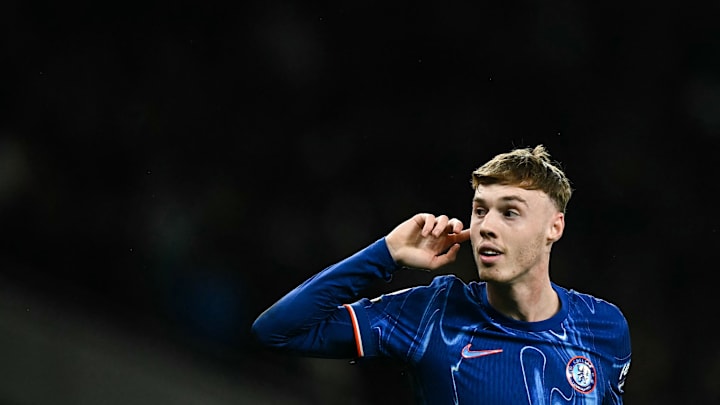Chelsea's Struggles and Adjustments
When Chelsea failed to involve Sánchez in their build-up, they were restricted to a 5v5 setup, struggling to progress the ball effectively. This limitation played a role in the lead-up to the home side's second goal.
However, Chelsea did find success exploiting Tottenham’s high defensive line with long balls into the channels. Nicolas Jackson often drifted to the left to receive such passes, helping relieve pressure and create opportunities. Chelsea’s first goal came as a result of their ability to involve Sánchez, exploit their numerical superiority, and progress the ball through midfield and wide areas.
Chelsea's High Press
Chelsea’s pressing structure mirrored Spurs’ approach but with subtle differences. They deployed a -2 numerical setup in the first phase, giving them an extra defender for coverage. Jackson and Palmer alternated between shadow-marking Tottenham’s center-backs and Bissouma while pressing the Spurs goalkeeper.
At times when the frontline press was a step behind, Spurs could use their rotations and movement to hurt Chelsea - like they did here with Son coming close.
— Fahd (@fahdahmed987) December 8, 2024
No pressure on the opp. + high line is a bad idea. City fans would especially know.pic.twitter.com/M9EyxU6NJL
This setup enabled the Blues to stifle Spurs' build-up play effectively. However, on occasions where the frontline press was slightly delayed, Spurs’ movements and rotations created opportunities, with Son Heung-min playing a crucial role in exploiting these moments.
Key Tactical Adjustments
At halftime, Maresca made an important tactical adjustment to address Chelsea’s lack of balance in the build-up phase. Malo Gusto replaced Roméo Lavia, with Caicedo moving into a midfield pivot role alongside Fernández. This change allowed Colwill to revert to his preferred role as a center-center-back, while Benoît Badiashile shifted to the left, where he was more comfortable.
Cucurella also advanced higher on the left-hand side, combining effectively with Jadon Sancho to create chances early in the second half. This adjustment significantly improved the west London team's stability in possession.
Maresca was unhappy with Chelsea's balance in the build-up phase so made a tactical adjustment at half-time - bringing on Gusto, a natural RB, for Lavia.
— Fahd (@fahdahmed987) December 8, 2024
Thus, we saw Caicedo play as the pivot in possession with Enzo whilst Cucurella advanced in the LHS. He has good chemistry… pic.twitter.com/NJMtsTWLiC
